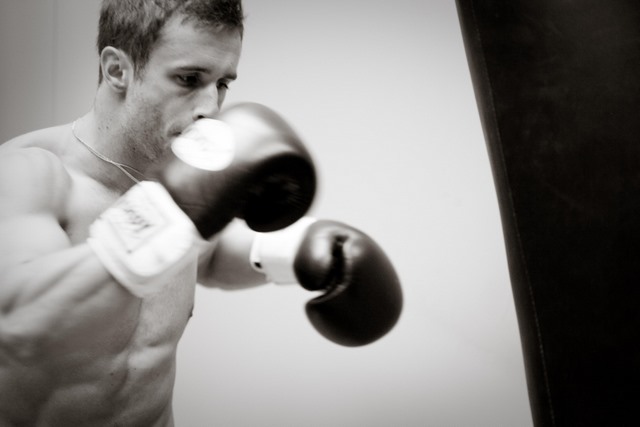I was exposed when I first started training as a fighter. For one, my conditioning was atrocious – at least in comparison to a fighter. I also figured throwing punches at someone wouldn’t be all that difficult, but the skill of fighting was the greatest difficulty I faced. Boxing is a tough sport to learn, and it’s a whole other issue to actually get good at it, and to feel comfortable in the ring.
One of my most glaring weaknesses wasn’t something I’d paid all that much attention to: my core.
The more I trained as a fighter, the more I saw it’s importance. I felt how it was involved in my stability, how it was the foundation for my power and speed.
Even though I’d been an athlete my entire life, I’d never really trained my core effectively. I had to learn how to, as a result, my back became much stronger, I had more power and speed, and I also had better posture (maybe the best benefit). Dan Garner is a guy who knows a lot about how to train the core. He’s been kind enough to write an article for us.
Side note: for the skinny guys out there, he’s hooked you up with this killer video – if you have trouble gaining muscle, this video will give you the solution. Enjoy.
The Core: A Deeper Look
The core has garnered a lot of attention in the past ten years in the health, wellness and fitness industry. Pre-millennium the general anatomical view of the core was only viewed as the abdominals and the erector spinae. To this day that is also what you will see when you step in to any commercial gym setting. You can ask a member what they are hitting and they will respond with “core” or “shoulders and core” or whatever the split may be. This usually entails crunches on the swiss ball at the end of a session and then calling it a day.
Research has taken us so far that the generalization of hitting core with a single movement for the rectus abdominis falls massively short in what could be accomplished with proper core training.
The core is made up of many different muscles that all move in different planes of motion including:
- the internal / external obliques,
- rectus abdominis,
- transverse abdominis,
- paraspinals,
- erector spinae,
- gluteals,
- serratus,
- diaphragm,
- the pelvic floor, and
- the deepest unit closest to the organs known as the abdominal wall.
These muscles all move in their own plane of motion and should be trained according to their purpose.
The muscles of the core are divided into three categories known as:
Global stabilizing
Primarily joint stability
Contribute through low-load momentum eccentric deceleration
Global mobilizing
Larger superficial musculature
Movement of the trunk and limbs and stabilizing external loads placed upon the body
Local stabilizing
Located in close proximity to joint structures
Largely responsible for joint stability
The muscle categories of the core are integrated and work as one functional unit while playing a vital role in the proper function of your posture, limb movement, power output and all athletic endeavours.
